This article was medically reviewed by Jonas DeMuro, MD. Dr. DeMuro is a board certified Pediatric Critical Care Surgeon in New York. He received his MD from Stony Brook University School of Medicine in 1996. He completed his fellowship in Surgical Critical Care at North Shore-Long Island Jewish Health System and was a previous American College of Surgeons (ACS) Fellow.
There are 15 references cited in this article, which can be found at the bottom of the page.
wikiHow marks an article as reader-approved once it receives enough positive feedback. This article received 12 testimonials and 93% of readers who voted found it helpful, earning it our reader-approved status.
This article has been viewed 289,678 times.
Kneecap dislocation, or patellar dislocation, occurs when the kneecap slides out of place, generally towards the outside of the leg, causing it to swell. Kneecap dislocations usually occur as a result of twisting or wrenching the knee with a planted foot during dancing or gymnastics. Most kneecap dislocations are not due to direct trauma to the knee.[1] Knee dislocation results in pain and swelling of the area, and may cause the individual knee to feel unstable. Often with a kneecap dislocation, your knee will be partially bent and you will be unable to fully extend it.[2] There are a number of things to consider when healing after a knee dislocation to ensure that the area heals correctly and that another dislocation will be avoided in the future.
Steps
Diagnosing a Kneecap Injury
-
1Go to the emergency room or an urgent care facility if you suspect you have dislocated your kneecap. It is important that your injury be assessed by a physician before it worsens. Injuries that are caught and treated early are likely to heal faster and may need fewer medical interventions.
-
2Do not try to bring a dislocated knee or kneecap back to the original position. You should never try to “pop” you knee back into place or otherwise adjust it on your own. Only a qualified healthcare professional should do that, and it should only be done in the event of an actual dislocation; you likely do not know for sure whether the injury is, in fact, a dislocation.Advertisement
-
3Have your knee evaluated for other injuries. The knee is the joint most prone to injuries in the entire human body. It contains numerous connective tissues and bones that must work in synchrony to function correctly.[3]
- The doctor’s exam will consist of a visual inspection of the knee, palpation and manipulation, looking for swelling and incorrect positioning or movement of the joint.[4]
- The doctor will likely obtain an x-ray before you leave to make sure you have not broken or fractured anything. Approximately 10% of kneecap dislocations are associated with a kneecap fracture.[5]
Treating a Dislocated Kneecap
-
1Prepare yourself for a reduction. If your doctor agrees that you have a kneecap dislocation, he/she will likely perform a procedure called a “reduction,” which will slide your kneecap back into place.[6]
- The doctor will likely give you pain medication before manipulating your knee to minimize the discomfort. Generally he/she will follow this procedure with an x-ray to make sure everything is in the correct place.
- Again, it’s important to not try this at home as it is difficult to figure out which injuries need surgery or specialized treatments, and further damage can occur if this is not done correctly.
-
2Be aware that some dislocations may require surgery. If you have a rare type of dislocation or additional injuries, your doctor may need to consult an orthopedic surgeon (a specialist surgeon who treats bony injuries) to determine whether surgical intervention is necessary.[7]
Allowing for Proper Healing
-
1Rest your leg as directed. You should always follow your doctor’s instructions, but some general guidelines for resting your knee and reducing swelling follow:[8]
- Elevate your knee
- Apply an ice pack or cold compress for 10 – 15 minutes
- Repeat four times per day for a few days after the injury
-
2Take over-the-counter pain relievers. If your doctor says it is okay, take Motrin (ibuprofen) to reduce your pain and swelling.[9] Follow the dosing prescribed by your doctor or pharmacist.
- You can also take Tylenol (acetaminophen), but this will only treat the pain and not address swelling.
- Talk to your doctor if you feel that you need to continue using these medications for longer than a week.
-
3Wear your knee brace. After your kneecap is back in place you will likely be placed in a knee brace to prevent the kneecap from becoming dislocated again.[10] The connective tissues in your knee may take weeks to heal enough to provide stability to your kneecap.
- In the meantime, it is important that you wear the brace as it will provide stability to the joint.
-
4Make follow-up appointments a priority.[11] It can be easy to skip or reschedule follow-up appointments with your doctor once you are no longer in pain. However, these appointments are necessary so that your doctor can ensure that the knee is healing properly and that there are no secondary injuries that were missed at your original appointment.
- Expect your first follow-up appointment to be just a few days after the initial injury.
-
5Use caution for several weeks after the injury. You should try to avoid putting too much stress or pressure on your knee for a few weeks after the injury. You should allow the joint to be mobile while still giving it time to heal. Discuss with your doctor when to resume work and other activities.
-
6Attend physical therapy if necessary.[12] If your doctor refers you to a physical therapist once your knee has started to heal, be sure that you go to your therapy appointments and do any at-home exercises that the physical therapist gives you.
- Even when your knee starts to feel better, you have to strengthen it the proper way to avoid re-injury and ensure a full range of motion. This can also help you avoid complications down the road.
-
7Consult a sports medicine physician if you are an athlete. [13] Athletes who have suffered from a kneecap injury should consult a qualified board-certified sports medicine physician to get specific recommendations about returning to training.
- Most of the time, a kneecap injury will require four to six weeks of healing before you can return to playing.[14]
-
8Take a Glucosamine supplement. Studies are somewhat inconclusive about this supplement, but there is some evidence that it can help improve knee movement after an injury.[15]
-
9Wear supportive shoes. While you are healing and possibly in the weeks after you have been cleared for normal activity, you should wear good quality shoes. [16] This can help you have a regular gait while walking or running and avoid putting too much pressure on your knees.
Expert Q&A
-
QuestionWhat is the thing to do first if I dislocated my kneecap 24 hours ago?
 Daniel Wozniczka, MD, MPHDr. Wozniczka is an Internal Medicine Physician, who is focused on the intersection of medicine, economics, and policy. He has global healthcare experience in Sub Saharan Africa, Eastern Europe, and Southeast Asia. He serves currently as a Lieutenant Commander in the U.S. Public Health Service and a Medical Officer for the Epidemic Intelligence Service in the CDC. He completed his MD at Jagiellonian University in 2014, and also holds an MBA and Masters in Public Health from the University of Illinois at Chicago.
Daniel Wozniczka, MD, MPHDr. Wozniczka is an Internal Medicine Physician, who is focused on the intersection of medicine, economics, and policy. He has global healthcare experience in Sub Saharan Africa, Eastern Europe, and Southeast Asia. He serves currently as a Lieutenant Commander in the U.S. Public Health Service and a Medical Officer for the Epidemic Intelligence Service in the CDC. He completed his MD at Jagiellonian University in 2014, and also holds an MBA and Masters in Public Health from the University of Illinois at Chicago.
Internal Medicine Physician If you dislocated your kneecap, I strongly recommend that you seek medical attention quickly. Talk with your primary care doctor.
If you dislocated your kneecap, I strongly recommend that you seek medical attention quickly. Talk with your primary care doctor.
References
- ↑ Patellofemoral instability and malalignment. In: Essentials of Musculoskeletal Care, 2nd, Green WB. (Ed), American Academy of Orthopedic Surgeons, Rosemont 2001. p.387.
- ↑ https://www.nhs.uk/conditions/dislocated-kneecap/
- ↑ https://teachmeanatomy.info/lower-limb/joints/knee-joint/
- ↑ http://www.ncbi.nlm.nih.gov/pmc/articles/PMC3445142/
- ↑ Bachman D, Santora S. Orthopedic trauma. In: Textbook of Pediatric Emergency Medicine, 3rd, Fleisher GR, Ludwig S, Henretig FM. (Eds), Lippincott Williams & Wilkins, Philadelphia 2006. p.1525
- ↑ http://journals.lww.com/co-pediatrics/Abstract/2004/02000/Traumatic_patellar_dislocation_in_children_and.7.aspx
- ↑ Young GM. Reduction of common joint dislocations and subluxations. In: Textbook of Pediatric Emergency Procedures, Henretig RM, King C. (Eds), Williams & Wilkins, Baltimore 1997. p.1088.
- ↑ http://www.sciencedirect.com/science/article/pii/S0278591905700454
- ↑ http://health.clevelandclinic.org/2013/09/acetaminophen-vs-ibuprofen-which-works-better/
- ↑ http://ajs.sagepub.com/content/25/2/213.abstract
- ↑ http://www.uptodate.com/contents/recognition-and-initial-management-of-lateral-patellar-dislocations
- ↑ http://reference.medscape.com/article/90068-treatment
- ↑ Kibler WB. The knee. In: American College of Sports Medicine's Handbook for the Team Physician, Williams & Wilkins, Baltimore 1996. p.324.
- ↑ Kibler WB. The knee. In: American College of Sports Medicine's Handbook for the Team Physician, Williams & Wilkins, Baltimore 1996. p.324.
- ↑ http://www.nlm.nih.gov/medlineplus/druginfo/natural/807.html
- ↑ https://www.oastaug.com/how-to-prevent-the-4-most-common-knee-injuries/
About This Article
To heal from a knee dislocation, visit your doctor so they can perform a reduction, which is a procedure to slide your knee cap back into place. Once you've returned home, elevate your knee and apply a cold compress for 15 minutes 4 times a day for several days. If you’re struggling with pain or swelling, take Ibuprofen, provided your doctor says it’s ok to do so. Since knee tissue can take weeks to grow back, wear your knee brace at all times to provide stability to the joint. You should also attend several follow-up appointments so your doctor can make sure you’re healing well and don’t have any secondary injuries. After you’ve been healing for a week or two, attend a physical therapy session to help get your knee moving again. For tips from our Medical co-author, including what to do if you’re an athlete, read on!
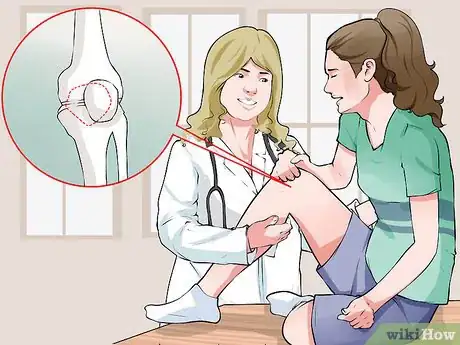
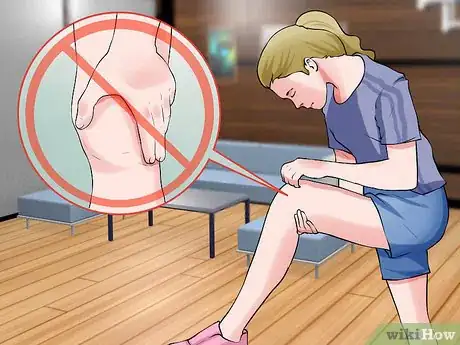
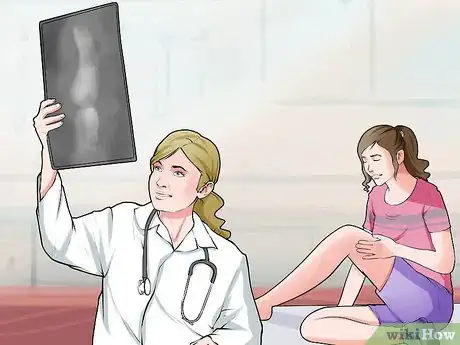
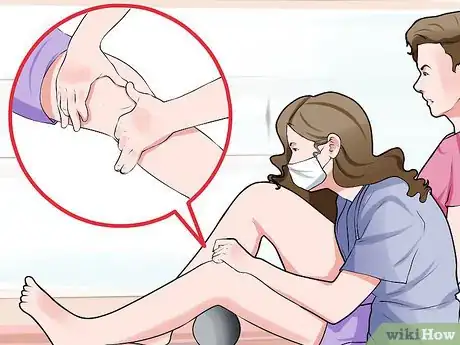
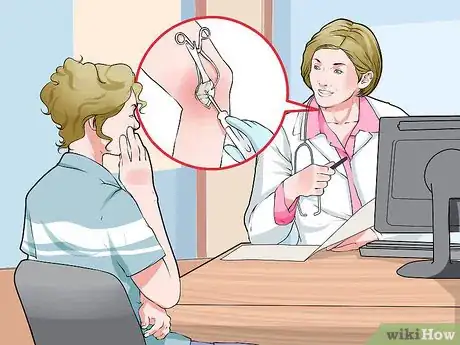
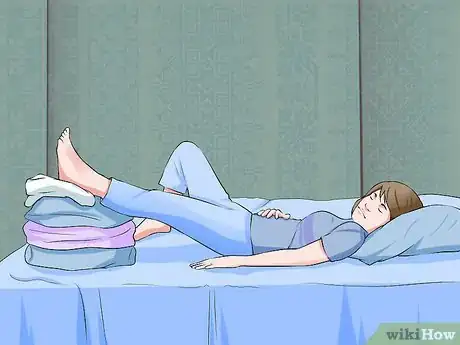

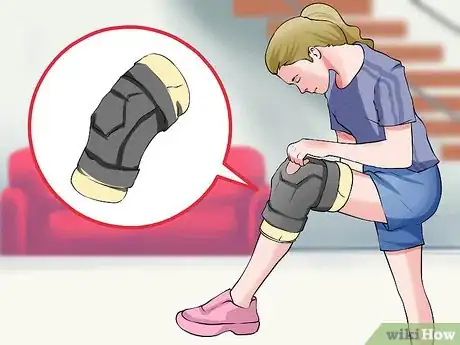
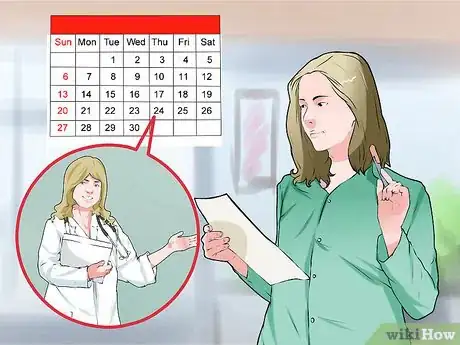
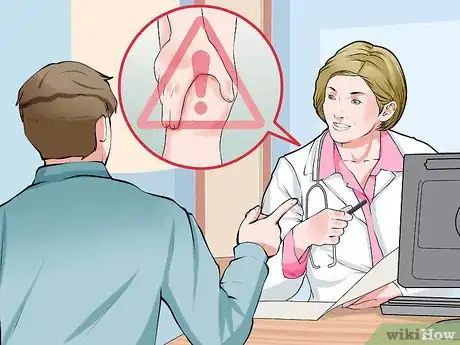
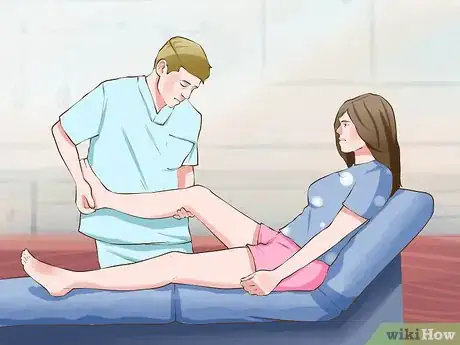
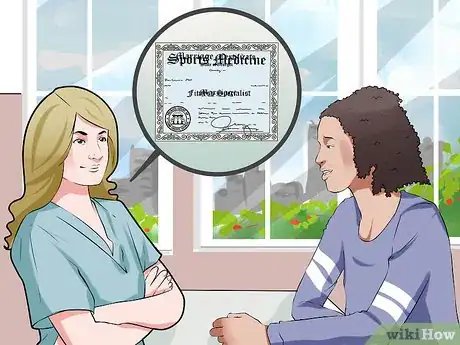

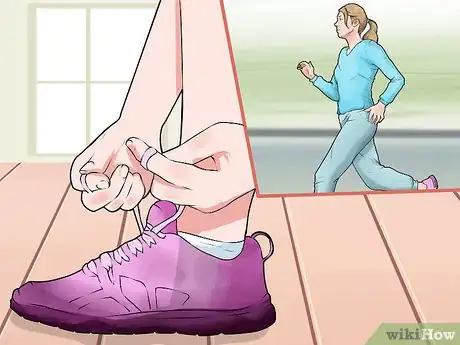
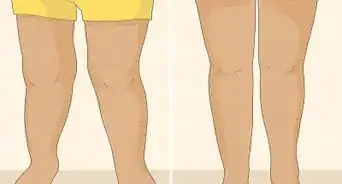
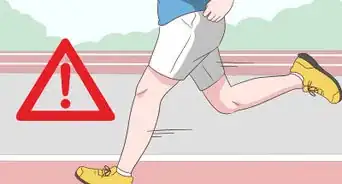

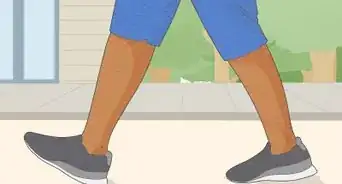
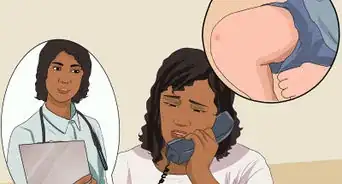
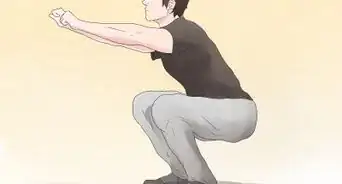

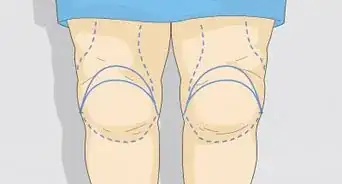
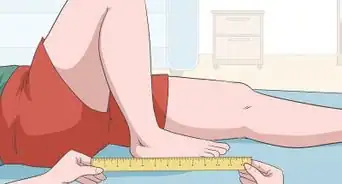
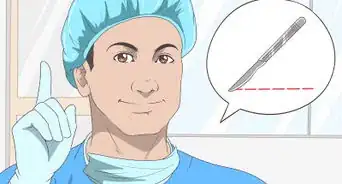
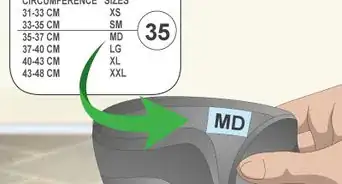
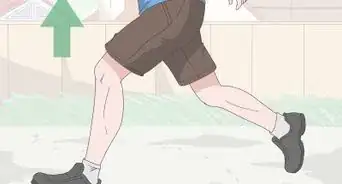










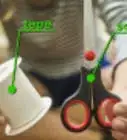
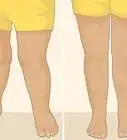
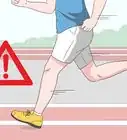




































Medical Disclaimer
The content of this article is not intended to be a substitute for professional medical advice, examination, diagnosis, or treatment. You should always contact your doctor or other qualified healthcare professional before starting, changing, or stopping any kind of health treatment.
Read More...